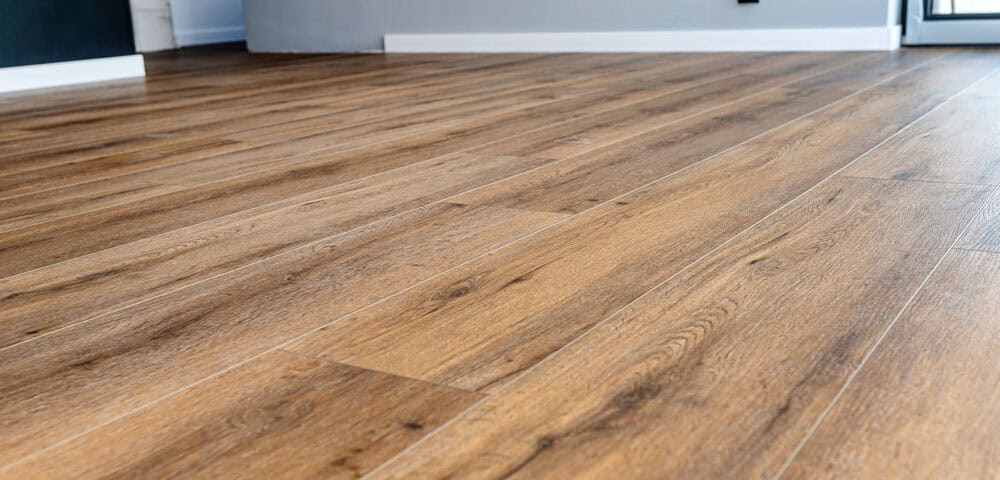- Have any flooring questions?
- 631-673-1050
- [email protected]
How Do You Prevent Moisture Damage in Hardwood Floors?

How to Identify When Your Hardwood Floors Need Refinishing: Key Signs to Look For
June 27, 2025
How Can Minor Scratches and Scuffs on Hardwood Floors Be Effectively Repaired by Homeowners?
July 10, 2025Summary:
Why Moisture is a Threat to Wood Flooring
Hardwood floors are a natural, hygroscopic material, meaning they absorb and release moisture from the air. This process causes the wood to expand and contract with seasonal changes. When exposed to excessive water from a leak or high humidity, wood planks absorb moisture and swell. This expansion can lead to “cupping,” where the edges of a board are higher than its center, or “crowning,” where the center is bowed upward. If the issue is severe, the pressure can cause planks to buckle and detach from the subfloor entirely. Unlike laminate flooring, which often requires immediate replacement, damaged hardwood sometimes allows for floor sanding. However, preventing the problem in the first place is the most cost-effective approach for any flooring services.
The Role of a Vapor Retarder in Professional Installation
A critical defense against moisture begins before the hardwood floors are even laid. During a professional installation, a vapor retarder is placed over the subfloor. This layer is not the same as the thin plastic sheeting used under some types of vinyl flooring. For hardwood, the standard is often a 15-lb asphalt-saturated felt paper. This material allows your subfloor to breathe while blocking the majority of moisture vapor from migrating upward into your wood flooring. A correctly installed vapor retarder, with overlapped seams, prevents the slow, consistent moisture exposure that leads to widespread cupping and warping, a common concern on Long Island, where humidity can be persistent.
Acclimating Wood to Your Home’s Environment
One of the most vital steps in any professional installation of hardwood flooring is acclimation. Before installation, the new wood planks must be left inside your home for several days, typically 7 to 10. This period of time allows the moisture content of the wood to equalize with the ambient conditions of your living space. Skipping this step means the wood will expand or contract significantly after it has been nailed down, creating gaps or buckling. Proper acclimation is a hallmark of quality flooring services and is essential for the long-term stability of your floors.
Actively Managing Your Home's Climate
Your home’s internal environment is a key factor in the health of your hardwood floors. Wood performs best when the relative humidity is maintained between 35% and 55%. On Long Island, summer humidity can easily exceed this range, causing wood to expand. Conversely, dry winter heating can drop humidity levels, causing wood to contract and create gaps between planks. Using a dehumidifier in the summer and a humidifier in the winter helps you maintain this balance. A simple digital hygrometer can help you monitor conditions and make adjustments, preventing the seasonal stresses that weaken wood over time and may eventually lead to needing a full flooring replacement.
Responding Immediately to Spills and Leaks
Accidents happen, but with hardwood floors, your reaction time is important. When a spill occurs, clean it up immediately with a soft, absorbent cloth. Don’t let water pool on the surface; it can seep between the planks and into the wood. Check appliance connections, like those for your refrigerator’s ice maker or dishwasher, for slow leaks. Catching a small drip early can prevent the extensive subfloor damage that requires a major flooring replacement. Pay attention to areas near exterior doors, where rain or snow can be tracked inside.
The Value of a Protective Floor Finishing
The finish on your hardwood floors is more than just for looks; it is your first line of defense against surface moisture. Modern polyurethane finishes create a durable topcoat that resists water penetration from minor, short-term spills. Over time, this protective layer wears down from foot traffic. Periodic floor finishing or recoating can restore this protective barrier without the need for a complete floor sanding. This maintenance step keeps water on the surface, giving you the vital time needed to clean it up before it can soak into the wood itself.
A Long-Term Strategy for Protecting Your Hardwood
Maintaining the beauty and integrity of your hardwood floors is an ongoing process of awareness and control. By confirming proper installation with a vapor retarder, managing your home’s humidity, and responding quickly to water, you can prevent most moisture-related issues. These actions safeguard the wood from the interior outward. If you have concerns about existing moisture damage or want to assure your new wood flooring is installed correctly, it is wise to seek guidance. Contact Bob McGowan Wood Flooring for an assessment of your home’s specific needs here on Long Island.


